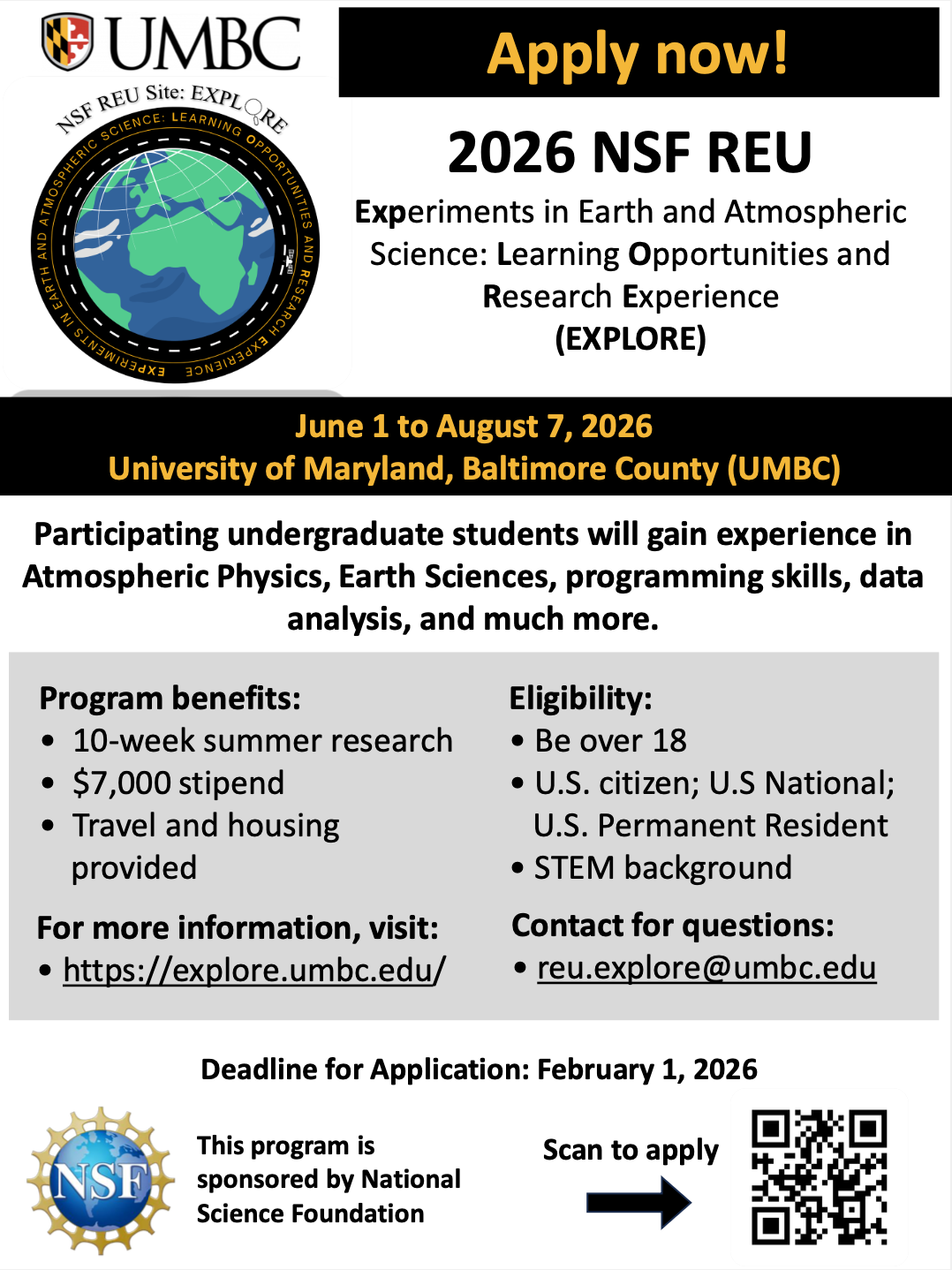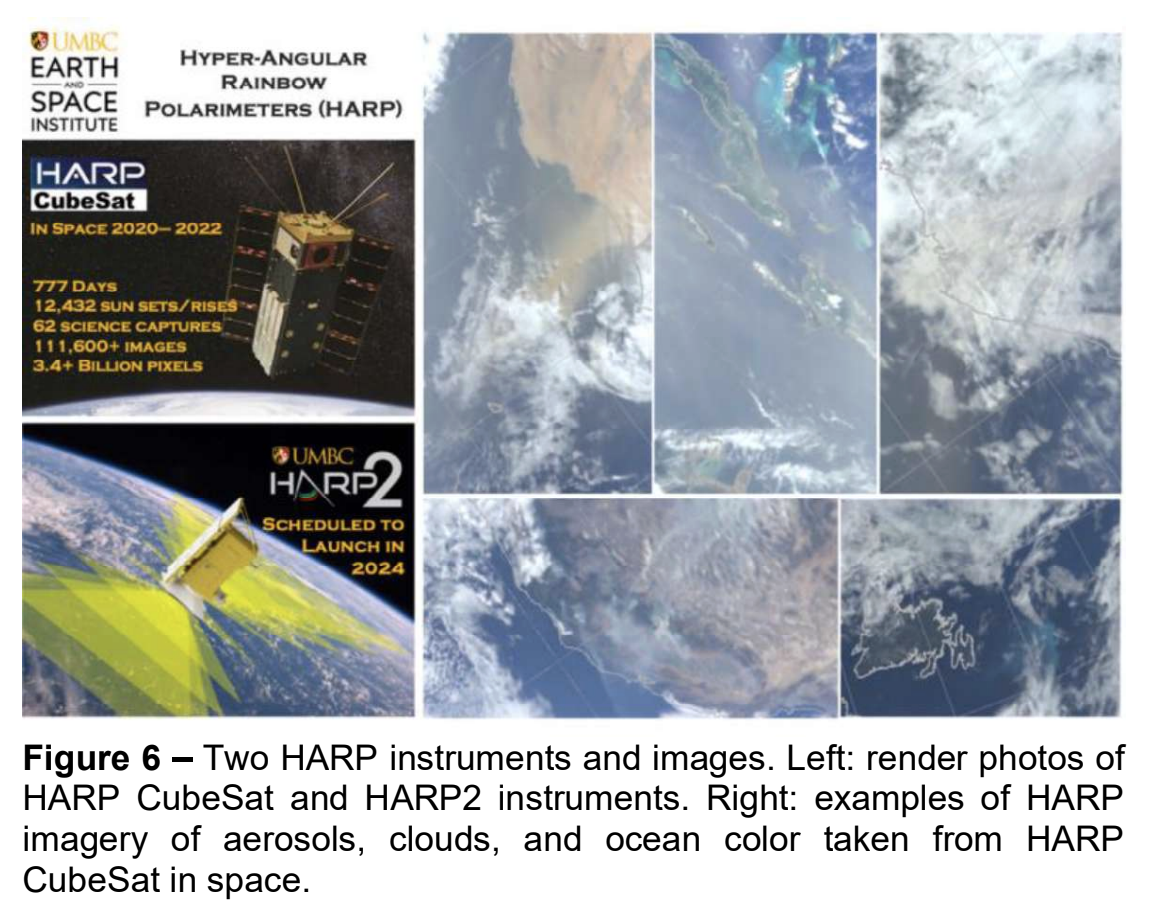The Earth and Space Institute (ESI) is excited to participate in the National Science Foundation (NSF) Research Experiences for Undergraduates (REU) site hosted at UMBC next summer 2026.
The site is called the Experiments in Earth and Atmospheric Science: Learning Opportunities and Research Experience (EXPLORE), and applications are open now! Interested undergraduate students at any stage in their college career are eligible. Scan the QR code or visit the EXPLORE page on the UMBC website for more details.
ESI-led projects
ESI scientists Drs. Richard Xu and Dr. Brent McBride will be two of several mentors for this REU.
Dr. Richard Xu, Observing atmospheric aerosols and clouds from the UMBC’s spaceborne polarimeters
Atmospheric aerosols directly emit tiny solid particles and liquid droplets, along with secondarily formed species from gaseous precursors, in the air. These ubiquitous specks of matter interact with solar and terrestrial radiation, affect cloud formation and precipitation, and thereby play an important role in the weather and climate system. Additionally, exposure to an excessive level of aerosols can result in adverse health outcomes. However, it remains critically challenging to accurately map the aerosol physical and chemical properties, which are governed by a complex interplay of emissions, meteorology, and chemistry.
Built at the UMBC Earth and Space Institute (ESI), the Hyper-Angular Rainbow Polarimeters (HARP) are designed to measure aerosol and cloud properties from space with unprecedented detail and accuracy level. The HARP CubeSat, as a technology demonstration funded by NASA, was deployed from the International Space Station in 2020 and collected valuable science data over its two-year life.
Undergraduate students involved in this project will gain experience to advance their career path through:
- Working with scientists and engineers at UMBC ESI and NASA GSFC who designed and built the HARP instruments, HARP science data algorithms, and products.
- Working on cutting-edge science on aerosol and cloud polarimetric remote sensing from space.
Dr. Brent McBride, Advancing Earth system science with AirHARP2 instrument data fusion
To understand Earth’s climate, we rely on a variety of satellite instruments. These sensors use sophisticated techniques to gather data. Some instruments image the Earth from ultraviolet to thermal infrared, measure the angle of reflected electric fields, or allow us to view the same Earth target from many angles. These techniques help us identify and correlate important drivers of our Earth system, such as aerosol amount, cloud height and phase, land use changes and wildfires, and ocean phytoplankton properties.
Last year, the UMBC Earth and Space Institute developed the AirHARP2 Suite, a set of four compact instruments designed to measure a broad range of atmospheric and surface properties, as a single unit. This suite combines three key measurement techniques: multi-angle viewing, multi-spectral imaging (from UV to shortwave infrared), and sensitivity to polarized light. The AirHARP2 Suite includes a copy of the HARP2 polarimeter that is currently flying on NASA’s PACE mission. The suite has been flight tested during a NASA field campaign (PACE-PAX) and will fly again in another campaign called INSPYRE in 2026.
The undergraduate student will collaborate with the UMBC ESI to:
- Develop aerosol, cloud, and surface science algorithms by combining information from the four AirHARP2 Suite instruments
- Intercompare AirHARP2 Suite data against other aircraft and spaceborne sensors from NASA’s PACE-PAX campaigns
Students involved with either project will also support the ESI participation in NASA’s INSPYRE campaign next summer. We will fly the AirHARP2 Suite again and will convert the ESI into a Mission Operations Center where we follow the flights and process the field data in real time!



